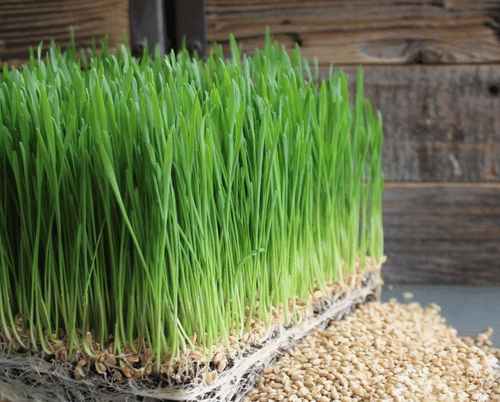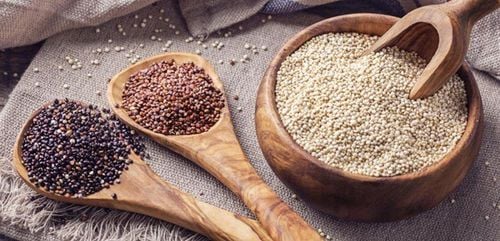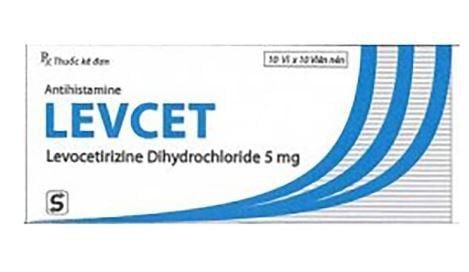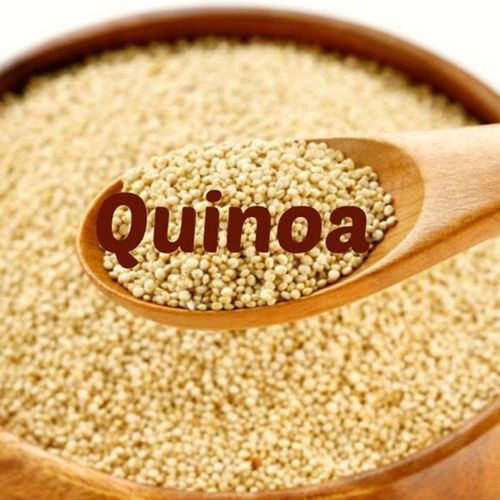This is an automatically translated article.
Quinoa is considered an extremely nutritious superfood and has many benefits for people's overall health. However, some cases of sensitivity to Quinoa can lead to allergic symptoms ranging from mild to severe. Knowing the cause of a quinoa allergy will help you take timely measures and avoid serious health complications.
1. Overview of Quinoa
Quinoa is known to be a delicious imitation grain and is very popular in South America. It has the same taste and properties as other common grains. Many people consider Quinoa a superfood because it's packed with protein, water, fiber, and carbohydrates.
Although quinoa seeds are low in sodium, they are rich in potassium, calcium and iron... making them a healthy nutritional choice for any diet.
In some cases, people who eat quinoa may experience symptoms such as itchy skin, abdominal pain, hives and other common symptoms of a food allergy. The reason is because the seeds and outer coating of Quinoa contain saponin compounds, which are capable of causing allergic reactions in users.
If you have a quinoa allergy or are sensitive to saponins, that doesn't mean you have to give up enjoying this nutritious nut. To prevent an allergic reaction, you should wash your quinoa seeds before you eat them to remove the saponin-containing coating on the outside or replace it with other healthy grains.
2. Symptoms of Quinoa nut allergy
If the body is intolerant or allergic to Quinoa nut, you will experience typical symptoms such as:
Itching; Asthma-like symptoms such as: Shortness of breath, cough, wheezing or feeling tight in your chest; Dermatitis, gastrointestinal inflammation or pneumonia; Eczema ; Itching or hives; Nausea; Vomiting; Stomachache; Diarrhea . In addition, you can also experience serious allergic reactions when eating Quinoa seeds, including:
Swelling of the face; pale skin; Low blood pressure; Increased heart rate; Shortness of breath or not being able to breathe. The saponins in Quinoa seeds are soapy, bitter in taste, and help protect the Quinoa plant from attack by pathogenic insects or fungi. In addition, it also contains toxins, which can potentially cause irritation and lead to other health problems in some people. However, the toxic level of saponins in quinoa seeds is quite low, so it is less likely to cause serious allergic reactions.
If you are allergic to saponins in Quinoa cereals, you can still eat them as long as you wash the seeds before using them. Ideally, you should soak quinoa seeds for at least 30 minutes and try to rinse several times before cooking, this will help remove the natural coating that contains saponins that cause irritation to the body.

Mọi người khi ăn hạt Quinoa có thể gặp phải các triệu chứng như ngứa da, đau bụng, nổi mề đay
3. Foods to Avoid and Replace Quinoa
If you have a quinoa allergy, you will need to pay attention to foods containing this nut or any food that can cause cross-reactivity, to avoid experiencing unwanted allergy symptoms. In addition, to ensure safety for your health, you can also replace eating quinoa with other healthy grains.
3.1 Cross-reactive foods Quinoa is in the same family as beets, spinach, and Swiss chard. Therefore, when consuming these foods, you may also experience an allergic reaction similar to when eating quinoa seeds.
3.2 Foods to Avoid If you have a quinoa allergy then you should avoid consuming foods made with this fake grain, such as quinoa flour, soups, breakfast cereals or combinations. like Pilaf rice.
In case Quinoa's saponins are the main culprit for your allergy, you'll need to avoid consuming other foods that also contain saponins, such as:
Soybeans; Green bean ; Amaranth seeds; Peanut; Navy beans; Western beans. In fact, it is difficult to completely eliminate these foods from the daily diet. It is important that you regularly monitor your body's response to eating certain types of beans or nuts to determine if it is necessary to avoid them altogether. If not, how should I eat it safely?
3.3 Quinoa Alternative Cereals If you can't eat Quinoa seeds, you can completely choose other nutritious grains to replace them, including:
Buckwheat: This grain is delicious and versatile. , however it is not in the wheat family. Buckwheat seeds are considered a rich source of energy, thanks to their higher fiber and protein content than quinoa. You can use buckwheat for baked goods like chocolate chip cookies, lemon waffles, or savory crepes.
Millet: Millet is a group of gluten-free grains that are widely used in everyday life for their impressive health benefits. There are 4 different types of millet and are widely grown all over the world, including:
Pearl millet; Mink tail millet; Millet Proso; Finger rest. Pearl millet is the most widely produced millet. Although rich in antioxidants and carbohydrates, the fiber content of pearl millet is only half that of quinoa. You can use millet to make cakes like apple pie or sticky rice.
Barley: Barley is a very good grain for people with diabetes because it contains a lot of fiber and potassium. Thanks to its extremely appealing taste, barley can become a perfect food, easily combined with any dish. You can use barley for dishes like salads or risotto.
Wheat grain: This grain has the same protein content as Quinoa, but with less than half the fat. Wheat seeds are not only rich in fiber, delicious in taste, but also go well with salads, chicken or cherries.
Freekeh Wheat: Connoisseurs often consider Freekeh wheat to be a super appealing grain. Freekeh is green wheat, popular in the Middle East, and an excellent source of fiber and protein. You can use Freekeh in dishes like salads, curry soups or in combination with some herbs.

Dị ứng hạt Quinoa sẽ gặp phải các triệu chứng điển hình như buồn nôn
4. How is a Quinoa nut allergy treated?
You may experience mild to severe allergic reactions after eating quinoa. In the case of a severe quinoa nut allergy, you are at increased risk for anaphylaxis. Therefore, it is important to see a doctor immediately if you have symptoms of a Quinoa allergy.
If it's just a minor allergic reaction, your doctor may prescribe an oral antihistamine for you. In severe cases, the doctor may inject epinephrine or EpiPen to the patient to promptly handle anaphylaxis.
Please dial HOTLINE for more information or register for an appointment HERE. Download MyVinmec app to make appointments faster and to manage your bookings easily.
Reference source: healthline.com












